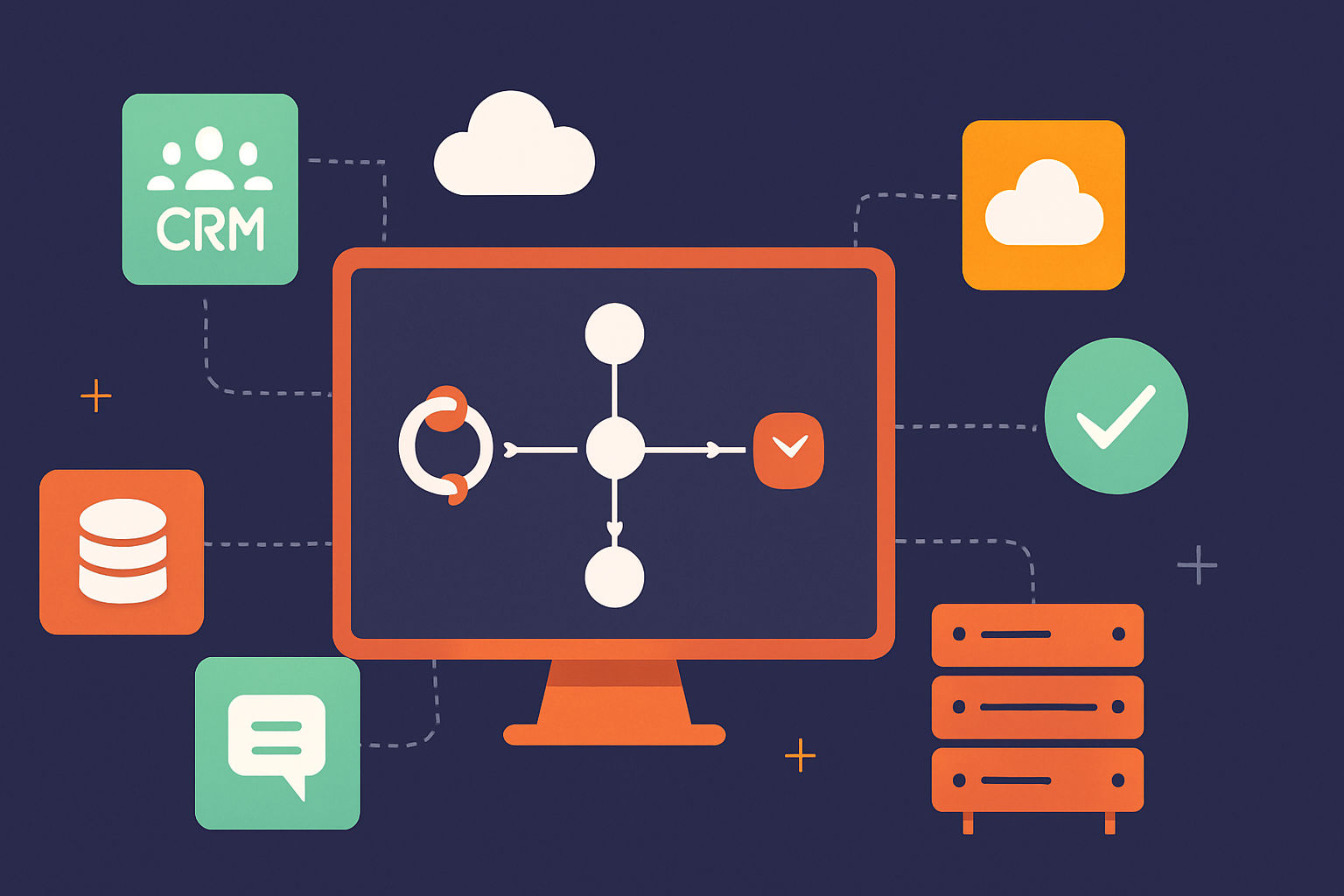Why n8n Matters: A Short Hook
Businesses today need automation that’s flexible, transparent, and cost-effective. n8n offers open-source, low-code workflow automation that appeals to both technical teams and business users — providing control without sacrificing speed.
What is n8n?
n8n (pronounced “n-eight-n”) is an open-source workflow automation tool that lets you connect apps, APIs, and databases using visual workflows. It combines low-code convenience with developer-grade extensibility: build simple triggers or complex multi-step automations that run on your infrastructure or in the cloud.
Key Benefits of n8n
Open-source and Extensible
n8n’s open-source core means you can inspect, modify, and extend the platform. Add custom nodes, write JavaScript in Function nodes, or contribute to the project. For teams that need bespoke logic, this openness is a major advantage over closed SaaS platforms.
Low-code Workflow Creation
Drag-and-drop workflow building gets business users productive fast. At the same time, developers can inject code where needed. This hybrid model reduces reliance on engineering for routine automations while keeping advanced customization available.
Broad Integrations
n8n supports a wide range of nodes — CRMs, databases, messaging tools, cloud services, and more. If a connector is missing, you can call any REST API or build a custom node to bridge the gap.
Self-hosting and Data Control
Run n8n on your servers or cloud account to keep sensitive data inside your environment. This is critical for regulated industries and for teams that must comply with strict data residency or security requirements.
Cost-effectiveness
Because you can self-host, your cost model is predictable and scalable. For high-volume workflows, self-hosted n8n often costs less than per-action SaaS pricing. n8n Cloud offers a managed alternative if you prefer a hosted option.
Scalability
n8n scales from simple automations to complex, high-throughput pipelines. Architectures using Kubernetes, Redis, and a dedicated database let you handle heavy loads while keeping workflows responsive.
Strong Community Ecosystem
The n8n community contributes nodes, templates, and tutorials. For teams exploring automation, community templates and shared examples speed up onboarding and reduce reinvention.
Practical Use Cases (Business & Technical)
Lead Enrichment and Routing (Business)
Example: When a new lead arrives via a web form, n8n calls an enrichment API, scores the lead, creates a CRM record, and notifies the right sales rep in Slack. This removes manual data entry and accelerates follow-up.
Invoice Processing (Finance)
Example: Extract invoice data from PDFs, validate line items against purchase orders, then update the accounting system and notify the finance team of exceptions.
Data Sync and ETL (Technical)
Example: Sync product catalogs between a headless CMS and an e-commerce platform, transforming fields and batching updates to avoid rate limits.
Monitoring and Alerts (Ops)
Example: Aggregate logs or metrics, detect anomalies with lightweight rules, and send contextual alerts to on-call engineers with links to diagnostic dashboards.
Comparison: n8n vs Zapier and Make
Zapier and Make are mature, user-friendly automation services. n8n shines where openness, customization, and cost at scale matter.
- Where n8n excels: self-hosting and data control, custom nodes and code, cost for high-throughput workflows, and the ability to run complex branching/looping logic.
- Where Zapier/Make excel: out-of-the-box ease for non-technical users, polished managed hosting, and a broad marketplace of pre-built integrations with guaranteed uptime.
In short: pick Zapier or Make for fastest time-to-value with minimal ops. Choose n8n when you need flexibility, lower operating costs at scale, or full control over data and infrastructure.
Best Practices for Getting Started
- Define clear use cases: start with high-impact, low-risk automations (e.g., notifications, lead routing).
- Begin with the cloud or a lightweight self-host: use n8n Cloud or Docker locally to experiment before committing to a production self-hosted setup.
- Use credentials and environment variables: keep secrets out of workflows and use encrypted credentials or a secrets manager.
- Modularize and reuse: use subworkflows/templates for repeated logic.
- Test and monitor: use the built-in execution logs, add retries, and integrate with observability tools.
- Plan for scaling: design workflows to respect API rate limits, use queuing where necessary, and scale via worker processes or Kubernetes.
Recommended Resources
- Official docs: docs.n8n.io — setup guides, node references, and architecture tips.
- Community forum: community.n8n.io — templates, questions, and peer support.
- GitHub repo: github.com/n8n-io/n8n — source code, issue tracker, and contribution info.
- Tutorials & videos: search for n8n walkthroughs on YouTube and blog tutorials for hands-on examples.
Conclusion & Call to Action
n8n offers a compelling mix of low-code usability and developer flexibility, making it a strong choice for teams that value control, extensibility, and cost predictability. Whether you’re automating routine business tasks or building complex integration pipelines, n8n scales to your needs.
Ready to explore? Try n8n Cloud for a quick start or spin up a local Docker instance and walk through a simple lead-routing workflow today. If you want help evaluating or building automations, reach out — we can help map use cases to a practical deployment and roadmap.
